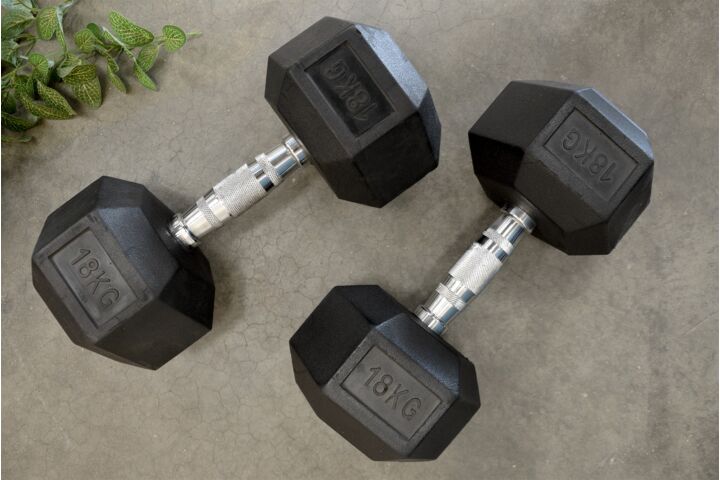Dumbbells
-
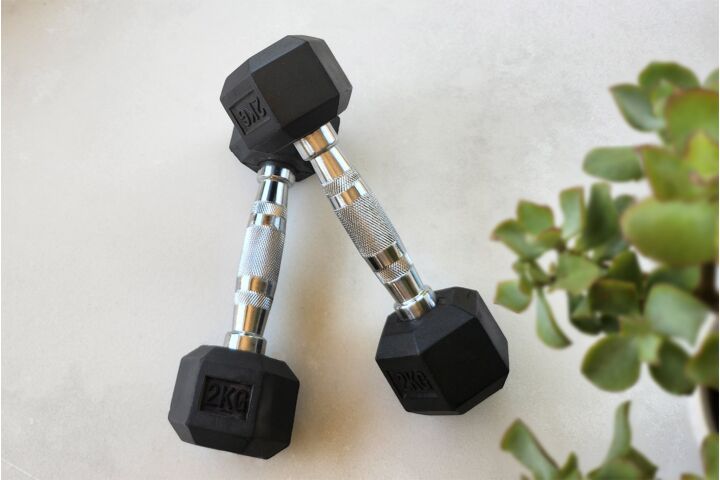
2kg Dumbbells (Pair)
£22 £15- 2 x 2kg Dumbbells. Total 4kg
- Durable Rubber Coated Ends
- Non-Rolling Hexagon Design
- Contoured Chromed Grip
-
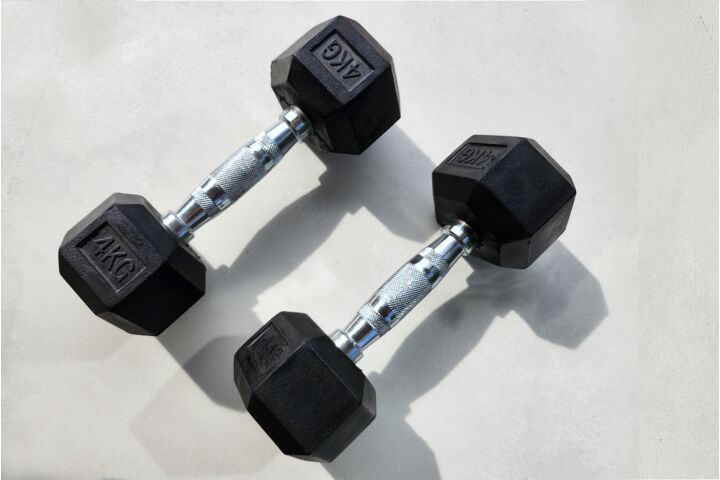
4kg Dumbbells (Pair)
£32 £22- 2 x 4kg Dumbbells. Total 8kg
- Durable Rubber Coated Ends
- Non-Rolling Hexagon Design
- Contoured Chromed Grip
-
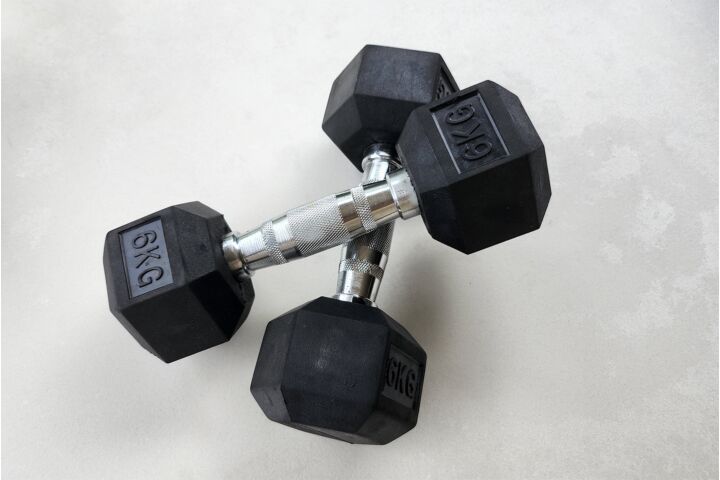
6kg Dumbbells (Pair)
£44 £30- 2 x 6kg Dumbbells. Total 12kg
- Durable Rubber Coated Ends
- Non-Rolling Hexagon Design
- Contoured Chromed Grip
-
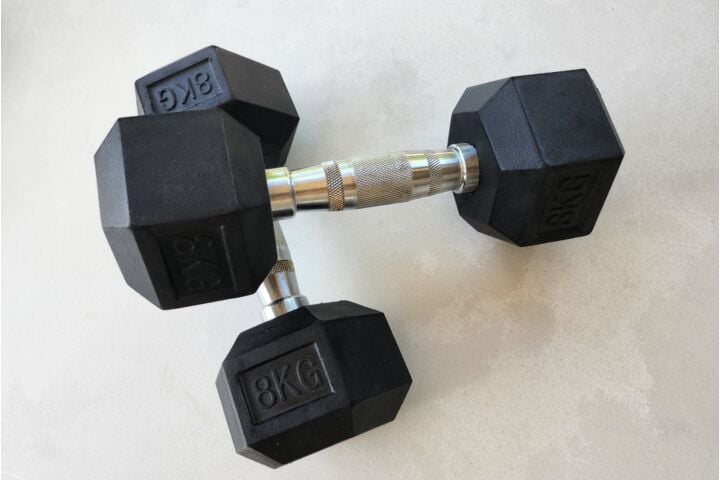
8kg Dumbbells (Pair)
£54 £36- 2 x 8kg Dumbbells. Total 16kg
- Durable Rubber Coated Ends
- Non-Rolling Hexagon Design
- Contoured Chromed Grip
-
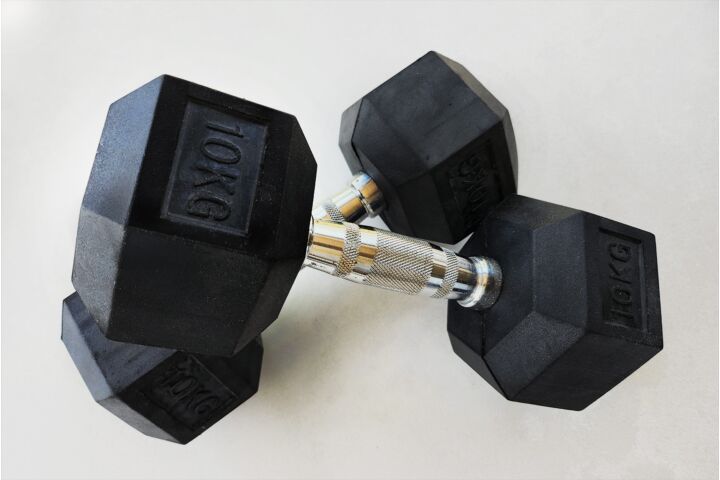
10kg Dumbbells (Pair)
£69 £48- 2 x 10kg Dumbbells. Total 20kg
- Durable Rubber Coated Ends
- Non-Rolling Hexagon Design
- Contoured Chromed Grip
-
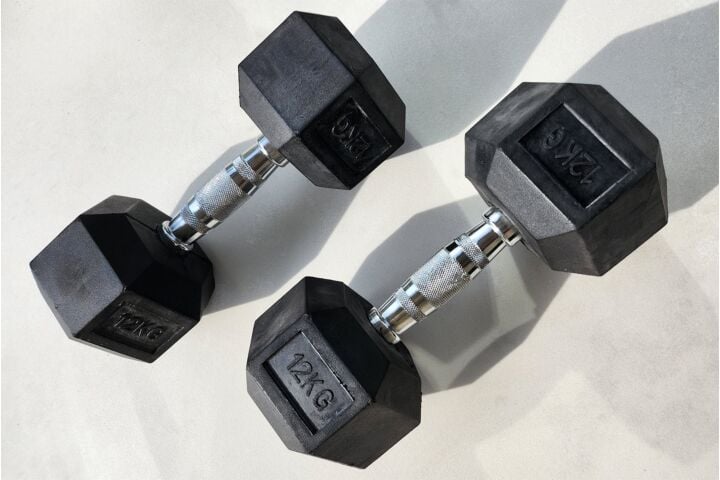
12kg Dumbbells (Pair)
£76 £53- 2 x 12kg Dumbbells. Total 24kg
- Durable Rubber Coated Ends
- Non-Rolling Hexagon Design
- Contoured Chromed Grip
-
14kg Dumbbells (Pair)
£88 £60- 2 x 14kg Dumbbells. Total 28kg
- Durable Rubber Coated Ends
- Non-Rolling Hexagon Design
- Contoured Chromed Grip
-
16kg Dumbbells (Pair)
£98 £68- 2 x 16kg Dumbbells. Total 32kg
- Durable Rubber Coated Ends
- Non-Rolling Hexagon Design
- Contoured Chromed Grip
-
18kg Dumbbells (Pair)
£109 £76- 2 x 18kg Dumbbells. Total 36kg
- Durable Rubber Coated Ends
- Non-Rolling Hexagon Design
- Contoured Chromed Grip
-
20kg Dumbbells (Pair)
£119 £80- 2 x 20kg Dumbbells. Total 40kg
- Durable Rubber Coated Ends
- Non-Rolling Hexagon Design
- Contoured Chromed Grip
DUMBBELLS FOR SALE, REVIEWS AND ADVICE
DUMBBELL BENEFITS
Dumbbells are small hand weights that can be used individually or in pairs. Available in a variety of different weight sizes, they are a fantastic total-body conditioning tool; providing a fast and efficient way to target all of the major muscle groups. Dumbbells can help you improve cardiovascular fitness, burn calories, build muscle and increase muscular endurance.
Used alone or with a bench, dumbbells are versatile, easy-to-use and a great addition to any home or commercial gym.
Muscle Building
You don't need huge barbells to build muscle; focus on increasing your training density with our range of dumbbell weights. Training density is simply doing the same amount of work in less time or more work in the same amount of time. If you can do more work in less time, you'll be smashing it!
Cardio Fitness
Use dumbbells to raise your heart rate and help improve your cardiovascular fitness. If you are new to exercise, improve your cardio stamina by using the lighter dumbbell weights for 30 minutes at a time. As your strength and fitness improves, increase the rep rate to move your heart rate into the aerobic zone.
Weight Loss
Dumbbell exercises help strengthen and tone your muscles, which is great for weight loss. This is because a pound of muscle burns more calories than a pound of fat. So increasing muscle mass will help you burn more calories throughout the day. Experts recommends combining resistance training that builds muscles with cardio exercises for the best results.
Muscular Endurance
If you regularly participate in sports, dumbbell exercises are a great way to improve your muscular endurance. Muscular endurance workouts focus on achieving a high repetition rate with the lighter dumbbell weights.
Bone Health
Weight-bearing exercises help to increase bone density, reducing the risk of a fracture.
Balance
Most of us have one arm or leg that tends to be stronger than the other. With a barbell, the stronger arm can assist the weaker arm but when you train with dumbbells, you have to use the resistance that the weaker arm can handle. Unilateral training with dumbbells will prevent the imbalance of strength and promote muscle development.
WEIGHT LIFTING TERMINOLOGY
REPS- Reps is short for repetitions. It refers to how many of the same exercise you do at any one time.
SETS- Sets are how many times you will repeat your reps. For example, you might do ten squats, three times with a 30-second rest between each set. In other words, you'll do 3 sets of 10 reps.
Weight training is split up into reps and sets because it's important to allow the muscles to rest in between dynamic exercises. By resting in between your sets, you can continue to work the muscle to exhaustion. Working the muscle to exhaustion may sound painful, and it might be when you first start training, but it's how you can strengthen the muscle. By exhausting the muscle, the tissues become torn and must repair itself, becoming stronger and more resilient.
How many reps and sets you'll want to do depends on the results you want. To build muscle you'll want to go for a heavier weight and fewer reps. For muscle endurance, you'll want a lighter weight for more reps.
A BRAND YOU CAN TRUST
28 Day Money Back Guarantee
JTX Fitness equipment comes with a fantastic 28 day ‘no-quibble’ returns policy. We hope that you are delighted with your purchase but if you are not absolutely happy, we will collect your order and offer a full refund (minus collection costs) within 28 days of purchase. Find out more about our 28 day money back guarantee here.
Independent Reviews
Our reviews are authenticated and published by TrustPilot. Giving you complete confidence in them as independent, authentic reviews from genuine customers. We are committed to ensuring the highest quality of both our equipment and our service and are very proud of our outstanding reviews as a result.
One Year Home Warranty
All of our weights come with a one-year home-use warranty. Your warranty is registered automatically on purchase with no hidden terms and conditions.
FREE Delivery When You Spend £99
Spend £99 or more on dumbbells or other fitness accessories to receive fast and free delivery. This discount will be applied automatically at checkout. Read more information about our delivery service.
Expert Knowledge Before and After You Buy
As well as stocking the very best fitness equipment we are dedicated to helping our customers achieve their long term fitness goals. To keep you motivated beyond the initial buzz, we regularly update our workout video library and share the latest news from our growing network of health and fitness experts.
Every weight serves a purpose
Lightweight dumbbells are versatile in terms of their benefits, not only can you build muscle mass with these weights but you can build muscular endurance too. If size is your goal you will need to do at least 3 sets of 8 - 12 reps, as a general rule of thumb, and your rest time between sets should be no longer than 60 - 90 seconds. However, if you're training your muscles to perform for an extended period of time you will want to do at least 3 sets of 12 - 20 reps.
It's important not to forget that you must decrease your rest time between sets to about 30 seconds, otherwise you risk decreasing the effectiveness of your endurance workout. If you're a boxer, a cyclist or a runner, such training can improve your performance by leaps and bounds. What is considered lightweight or heavyweight is relative to the lifter. A good test is to see which weight you can lift for 20 reps without difficulty. But generally speaking any dumbbell from 1kg to 8kg is widely considered to be on the lighter end of the scale.
Heavyweight dumbbells are your go-to for building muscle mass. By putting your muscles under immense pressure, you break them down. This sends hormonal signals to your body, causing the muscles to grow back bigger and stronger than before. Once your body has acclimatised to the new weight, in order to keep on growing you must move up a weight. This is something known as progressive overload. By constantly increasing the demand on your body you will reap amazing benefits in terms of size. It's also worth mentioning that unlike lightweight dumbbells, it is not necessary to have lots of reps.
If you're lifting at your limit then 6 - 8 reps should be sufficient. As mentioned previously, what's considered light or heavy is subjective, what is heavy for one person may be light for another. But, the vast majority consider anything from 10kg and above to be relatively heavy. Test yourself and see which weights push you to the edge of your limits. Once you've found a weight that you can only lift for 6 - 8 reps, you will have found your perfect heavyweight dumbbells. Beyond hypertrophy, heavyweight dumbbells are also great for strength training and explosive power training, essentials for athletes and sportsmen.
EXERCISES USING FREE WEIGHTS
Hammer Curls
Pick up the dumbbells and hold them vertically rather than horizontally. You may also want to hold them at the top end of the dumbbell, rather than gripping them in the middle. This should isolate the muscles more. Have your arms fully extended and curl the dumbbells until your thumbs are near your shoulders. Pause at the top of the movement, before lowering the dumbbell under control.
While performing this exercise consider doing so sitting down on a bench. While not strictly necessary, this reduces the chance of you swinging your arms instead of applying a controlled movement. If you do this exercise regularly, you will not only develop your biceps but your forearms as well. For this movement, 3 sets of 10 are generally enough to work your biceps to their limits.

Concentration Curls
For this exercise, you will want to find a bench and a relatively heavyweight dumbbell that you can curl with one arm. Sit down on the bench and pick up the dumbbell. Rest your elbow on the inside of your leg, extend your arm while still keeping your elbow on your leg and curl it back in a concentrated and controlled manner.
You should do this for each arm, generally 3 sets of 10 provides a sufficient workout for each of your biceps. This exercise is unrivalled in terms of at-home isolation movements for the biceps. Do it regularly to sculpt more symmetrical biceps.

Lateral Raises
This exercise works the lateral deltoids, which are the middle portion of your shoulders. You can perform this exercise in one of two ways. The first method involves you puffing out your chest and squeezing your glutes to straighten your posture. After you've done that, drive the weights up with your elbows. Do this by keeping your little fingers facing up instead of your thumbs. Try to keep your arms straight when attempting to perform the exercise this way.

The next method involves you putting the dumbbells in front of you as opposed to having them side by side. You then drive the dumbbells up with your elbows using your little fingers as a guide. Unlike the other method, when you perform the exercise this way you can keep your arms slightly bent. You may also lean forward slightly, performing the exercise this way can help when you start to use heavier weights. 3 sets of 10 are as usual, quite sufficient - but consider doing sets of 8 until you get used to the weight. Incorporate this exercise into your regular routine to make your shoulders look more defined and broader.



